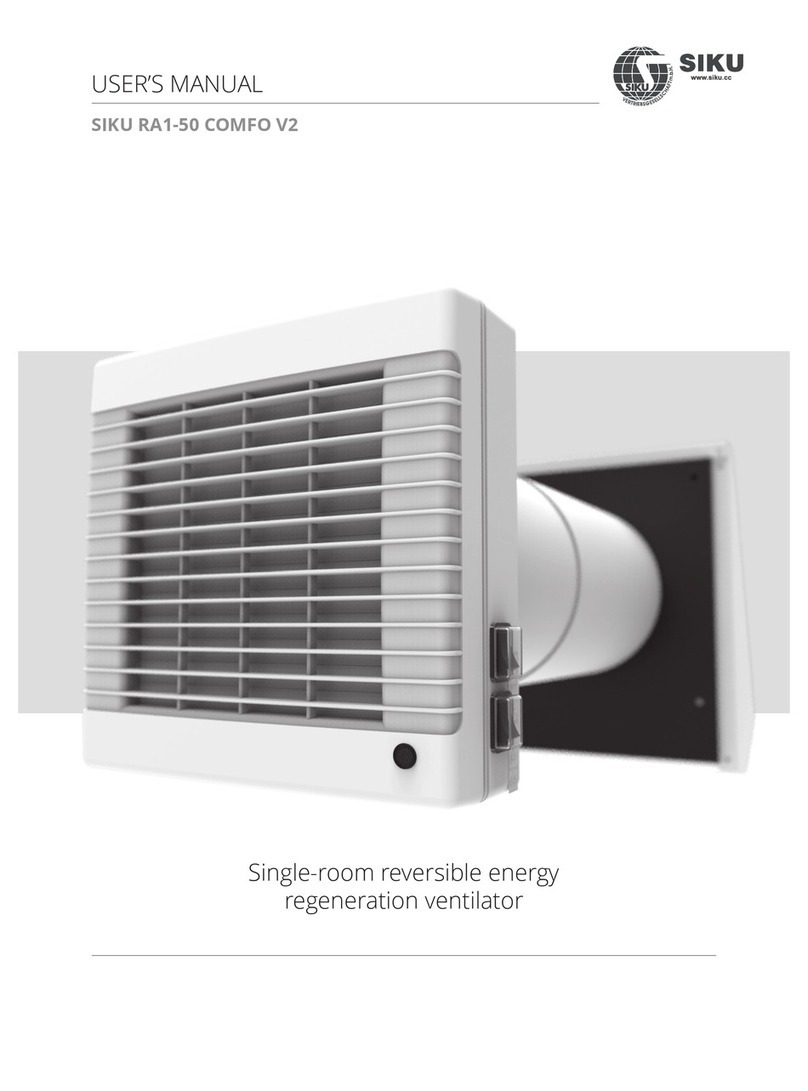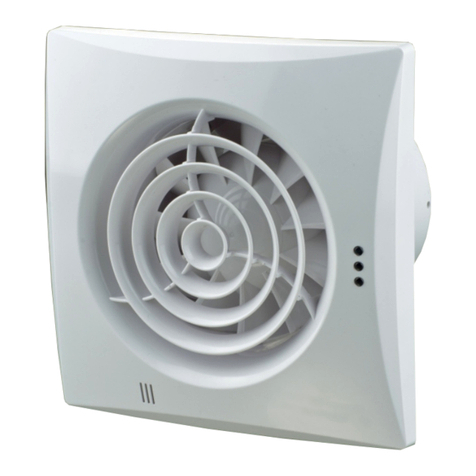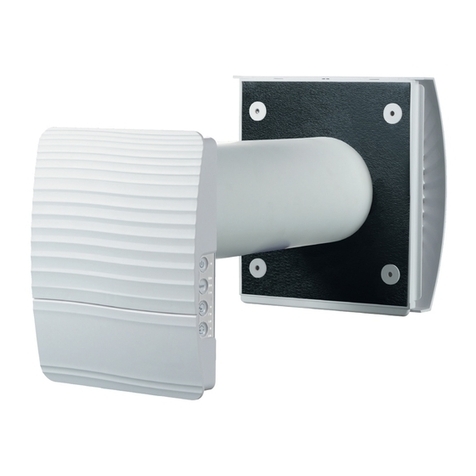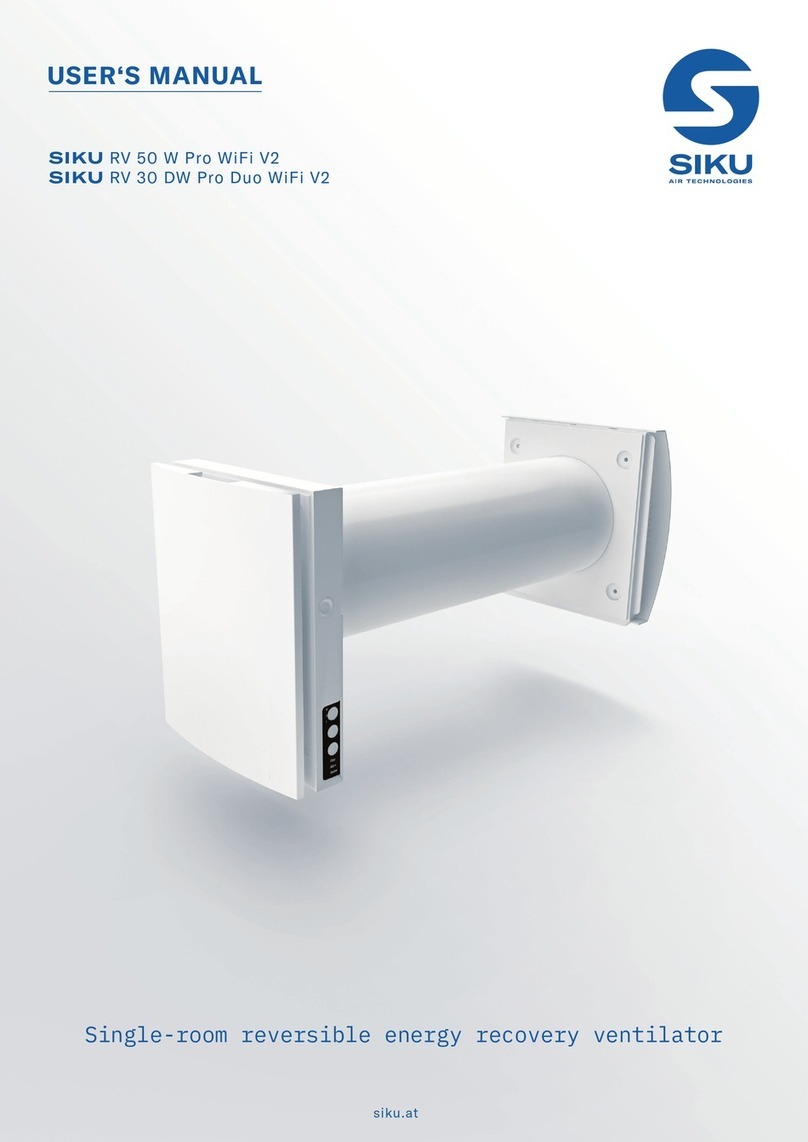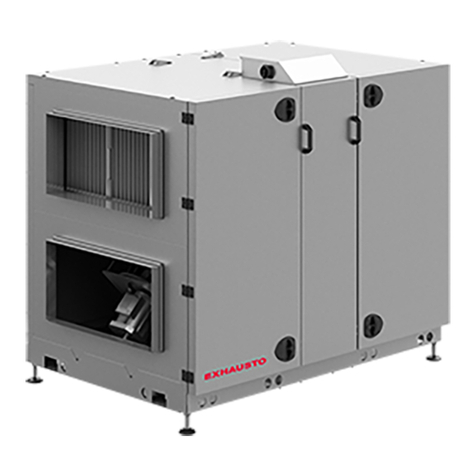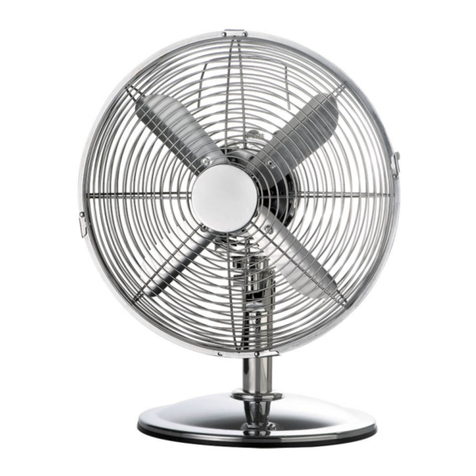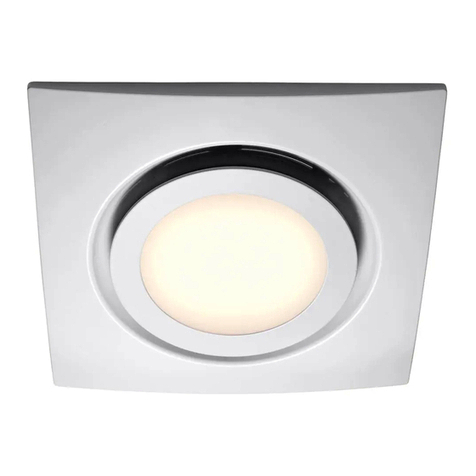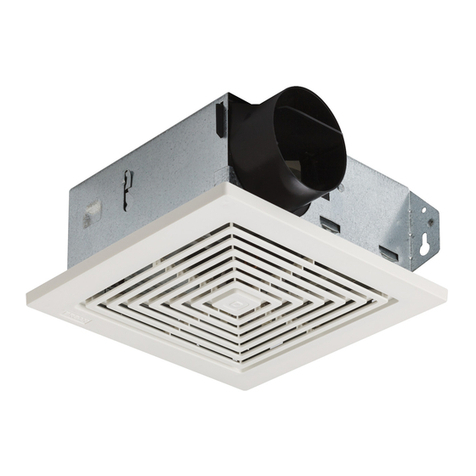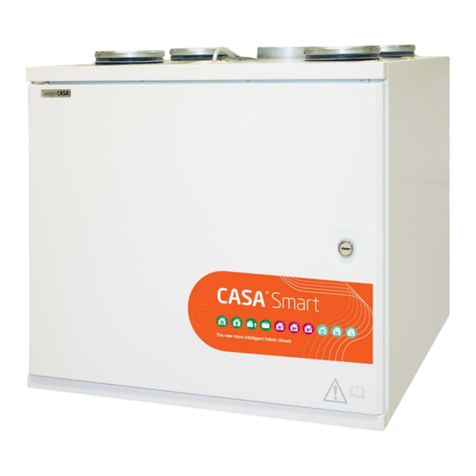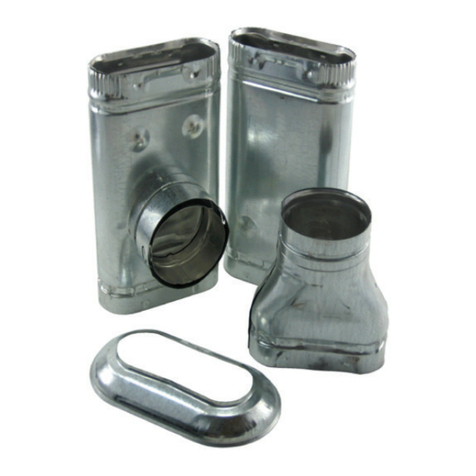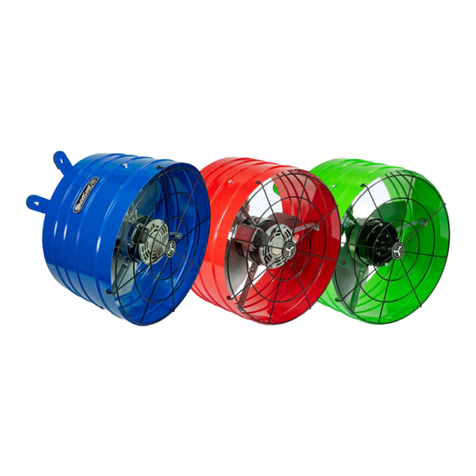Siku RV 50 C Pro Comfo V2 User manual

SIKU RV 50 C Pro Comfo V2
SIKU RV 30 C Pro Duo Comfo V2
Single-room reversible energy recovery ventilator
USER‘S MANUAL

2
SIKU RV 30/50 C Pro (Duo) Comfo V2
www.siku.cc
SAFETY REQUIREMENTS
• Please read the user’s manual carefully prior to installing and operating the unit.
• All user’s manual requirements as well as the provisions of all the applicable local and national construction, electrical, and technical
norms and standards must be observed when installing and operating the unit.
• The warnings contained in the user’s manual must be considered most seriously since they contain vital personal safety information.
• Failure to follow the rules and safety precautions noted in this user’s manual may result in an injury or unit damage.
• After a careful reading of the manual, keep it for the entire service life of the unit.
• While transferring the unit control, the user’s manual must be turned over to the receiving operator.
CONTENTS
UNIT INSTALLATION AND OPERATION SAFETY PRECAUTIONS
• Disconnect the unit from power mains prior
to any installation operations. • Unpack the unit with care.
• The unit must be grounded!
• While installing the unit, follow the safety
regulations specific to the use of electric
tools.
Safety requirements..................................................................................................................................................................... 2
Purpose................................................................................................................................................................................................ 4
Delivery set........................................................................................................................................................................................ 4
Designation key.............................................................................................................................................................................. 4
Technical data.................................................................................................................................................................................. 5
Unit design and operating principle................................................................................................................................. 6
Installation and set-up................................................................................................................................................................ 8
Connection to power mains and control....................................................................................................................... 11
Technical maintenance.............................................................................................................................................................. 16
Troubleshooting............................................................................................................................................................................. 18
Storage and transportation regulations.......................................................................................................................... 18
Manufacturer’s warranty........................................................................................................................................................... 19
Certificate of acceptance.......................................................................................................................................................... 23
Seller information.......................................................................................................................................................................... 23
Installation certificate.................................................................................................................................................................. 23
Warranty card................................................................................................................................................................................... 23
This user’s manual is a main operating document intended for technical, maintenance, and operating staff.
The manual contains information about purpose, technical details, operating principle, design, and installation of the SIKU RV 30/50 C Pro
(Duo) Comfo V2 unit and all its modifications.
Technical and maintenance staff must have theoretical and practical training in the field of ventilation systems and should be able to
perform works in accordance with workplace safety rules as well as construction norms and standards applicable in the territory of the
country. The information in this user’s manual is correct at the time of the document’s preparation. The Company reserves the right to
modify the technical characteristics, design, or configuration of its products at any time in order to incorporate the latest technological
developments. No part of this publication may be reproduced, stored in a retrieval system, or transmitted, in any form or by any means in
any information search system or translated into any language in any form without the prior written permission of the Company.

3
www.siku.cc
SIKU RV 30/50 C Pro (Duo) Comfo V2
• Do not change the power cable length at
your own discretion. Do not bend the power
cable. Avoid damaging the power cable. Do
not put any foreign objects on the power
cable.
• Do not lay the power cable of the unit in
close proximity to heating equipment.
• Do not use damaged equipment or cables
when connecting the unit to power mains.
• Do not operate the unit outside the
temperature range stated in the user’s
manual. Do not operate the unit in
aggressive or explosive environments.
• Do not touch the unit controls with wet
hands. Do not carry out the installation and
maintenance operations with wet hands.
• Do not wash the unit with water. Protect the
electric parts of the unit against ingress of
water.
• Do not allow children to operate the unit. • Disconnect the unit from power mains prior
to any technical maintenance.
• Do not store any explosive or highly
flammable substances in close proximity to
the unit.
• When the unit generates unusual sounds,
odour, or emits smoke, disconnect it from
power supply and contact the Seller.
• Do not open the unit during operation. • Do not direct the air flow produced by the
unit towards open flame or ignition sources.
• Do not block the air duct when the unit is
switched on.
• In case of continuous operation of the unit,
periodically check the security of mounting.
• Do not sit on the unit and avoid placing
foreign objects on it. • Use the unit only for its intended purpose.
THE PRODUCT MUST BE DISPOSED SEPARATELY AT THE END OF ITS SERVICE LIFE.
DO NOT DISPOSE THE UNIT AS UNSORTED DOMESTIC WASTE.

4
SIKU RV 30/50 C Pro (Duo) Comfo V2
www.siku.cc
DELIVERY SET
PURPOSE
THE UNIT SHOULD NOT BE OPERATED BY CHILDREN OR PERSONS WITH REDUCED
PHYSICAL, MENTAL, OR SENSORY CAPACITIES, OR THOSE WITHOUT
THE APPROPRIATE TRAINING.
THE UNIT MUST BE INSTALLED AND CONNECTED ONLY BY PROPERLY QUALIFIED
PERSONNEL AFTER THE APPROPRIATE BRIEFING.
THE CHOICE OF UNIT INSTALLATION LOCATION MUST PREVENT UNAUTHORIZED
ACCESS BY UNATTENDED CHILDREN.
The ventilator is designed to ensure continuous mechanical air exchange in flats, cottages, hotels, cafés and other domestic and public
premises. The ventilator is equipped with a regenerator that enables supply of fresh filtered air heated by means of extract air heat energy
recovery. The ventilator is designed for wall flush mounting.
The unit is rated for continuous operation.
Transported air must not contain any flammable or explosive mixtures, evaporation of chemicals, sticky substances, fibrous materials,
coarse dust, soot and oil particles or environments favourable for the formation of hazardous substances (toxic substances, dust,
pathogenic germs).
Name SIKU RV 50 C Pro Comfo V2 SIKU RV 30 C Pro Duo Comfo V2
Indoor unit of the ventilator 1 pc. 1 pc.
Air duct 1 pc. 1 pc.
Air flow distributor – 3-6 pcs.
Sound-absorbing material 1 pc. –
Assembled cartridge 1 pc. 1 pc.
Outer ventilation hood 1 pc. 1 pc.
Remote control 1 pc. 1 pc.
Cardboard template 1 pc. 1 pc.
Fastening set 2 packs 2 packs
Foam wedges 1 set 1 set
User's manual 1 pc. 1 pc.
Mounting hood installation instruction 1 pc. 1 pc.
Packing box 1 pc. 1 pc.

5
www.siku.cc
SIKU RV 30/50 C Pro (Duo) Comfo V2
TECHNISCHE DATEN
The unit is rated for indoor application with the following conditions:
• for SIKU RV 50 C Pro Comfo V2: Temperature ranging from -15 °C (5 °F) up to +40 °C (+104 °F) and relative humidity up to 50 %
• for SIKU RV 30 C Pro Duo Comfo V2: Temperature ranging from -15 °C (5 °F) up to +40 °C (+104 °F) and relative humidity up to 65 %
The unit is rated as a class II electric appliance.
Ingress protection rating against access to hazardous parts and water ingress is IP24.
The unit design is constantly being improved, thus some models may be slightly different from those described in this manual.
Technical specifications of the particular model are indicated on the unit casing.
The air duct length depends on the unit model, refer to the Designation Key section, page 4.
The supplied ventilation hood model depends on the ventilator model.
The overall dimensions of the outer ventilation hood, the required outside protrusion length of the air duct Aand the mounting sequence
of the hood are stated in its mounting instruction.
The overall dimensions of the front panel are stated below.
OVERALL DIMENSIONS OF THE INDOOR UNIT [mm] (inch)
68
235
285
207
85
137
138
207
85
137
138
SIKU RV 50 C Pro Comfo V2 SIKU RV 30 C Pro Duo Comfo V2
A
Ø 160
(Ø 6 5/16")
A
LL
Air duct length
Wall thickness
Wall thickness is above the minimum Wall thickness is minimal
Outer ventilation
hood
Front panel Front panel
Cartridge Cartridge
Air duct length
Wall thickness
Outer ventilation
hood

6
SIKU RV 30/50 C Pro (Duo) Comfo V2
www.siku.cc
UNIT DESIGN AND OPERATING PRINCIPLE
The ventilator consists of an indoor unit with a decorative front panel, a cartridge, an air duct and an outer ventilation hood.
The cartridge is a basic functioning part of the ventilator. The cartridge consists of the fan, the regenerator and two filters that ensure
rough air filtration and prevent ingress of dust and foreign objects into the regenerator and the fan.
The indoor assembly unit is equipped with automatic shutters that close during the ventilator standstill and prevent air backdraft.
SIKU RV 30/50 C Pro (Duo) Comfo V2 units are equipped with a set of air flow separators. The design of the supplied ventilation hood ensures
opposite direction of extract and supply air flows.
The outer ventilation hood is used to prevent direct ingress of water and other objects to the ventilator.
Filters
Clean the air stream of dust and
foreign objects and prevent
contamination of the
regenerator.
Front part of the indoor unit with front panel
For decoration purpose and closing of the air duct at the
standstill of the ventilator. The front part of the TwinFresh
Expert Duo also provides air filtration.
Indoor unit rear part
The unit includes a circuit control board and basic controls on the side part.
Indoor unit rear part
The unit includes a circuit control board and
basic controls on the side part.
TwinFresh Expert Duo cartridge
Assembly unit consisting of fans and a regenerator.
Generates air flow and provides energy regeneration.
TwinFresh Expert cartridge
Assembly unit consisting of fans, a regenerator and air filters.
Generates air flow and provides energy regeneration.
Air duct
Plastic air duct.
Air ow separators
Designed for separation of
supply and exhaust air streams.
Outer ventilation hood
Protects the unit from ingress of water and foreign objects.
Each ventilator model has a matching ventilation hood model.
Sound absorbing mat
Sound insulating material that provides attenuation of operation noises.
TwinFresh Expert Duo
TwinFresh Expert
VENTILATOR DESIGN
SIKU RV 30 C Pro Duo Comfo V2
SIKU RV 30 C Pro Duo Comfo V2 cartridge
SIKU RV 50 C Pro Comfo V2
SIKU RV 50 C Pro Comfo V2 cartridge

7
www.siku.cc
SIKU RV 30/50 C Pro (Duo) Comfo V2
VENTILATOR OPERATION MODES
SIKU RV 50 C Pro Comfo V2 SIKU RV 30 C Pro Duo Comfo V2
Ventilation: the ventilator runs either in extract or supply mode
at a set speed.
In this mode, when two ventilators are installed, one of them
supplies and the other one extracts the air.
Boost: the ventilator goes to the maximum speed without
changing the operation mode.
Regeneration: the ventilator runs in two cycles, 70 seconds each,
with heat and humidity regeneration.
• Cycle I. Warm stale air is extracted from the room and flows
through the ceramic regenerator, which gradually absorbs
heat and humidity. In 70 seconds, as the ceramic regenerator
gets warmed, the ventilator is switched to supply mode.
• Cycle II. Fresh intake air from outside flows through the ceramic
regenerator, absorbs accumulated moisture and is heated
up to the room temperature. In 70 seconds, as the ceramic
regenerator gets cooled down, the ventilator is switched to air
extract mode and the cycle is renewed. If two ventilators are
installed, they operate with opposite rotation directions in this
mode. While one ventilator supplies air, the other one extracts
it.
Ventilation: one of the ventilator fans operates in the air extract
mode and the other one operates in the air supply mode at a set
speed. The fans do not change their rotation direction.
Boost: if the sensor is actuated, the ventilator follows one of two
functioning algorithms set via the DIP switch during the ventilator
setup. For details, see page 13. The DIP switch is set to OFF: the
ventilator runs in the extract mode on the third speed (both fans
run in the extract mode). The DIP switch is set to ON: the ventilator
switches to maximum speed without changing the operation
mode.
Regeneration: one of the ventilator fans operates in the air
extract mode and the other one operates in the air supply mode.
The fans change their rotation direction every 70 seconds.
Die Verschlussklappen sind geschlossen. Die Verschlussklappen sind geöffnet.
LOUVER SHUTTERS OPERATION PRINCIPLE SIKU RV 50 C Pro Comfo V2
The indoor unit is equipped with automatic shutters. During the ventilator operation the automatic shutters are opened and let the air
flow freely through the ventilator. The automatic shutters are closed for 2 minutes at the ventilator shut down.
WARNING! In case of supplying power to the ventilator when the frontal part of the indoor unit is removed, no power is supplied to the
actuator and its rod is not lifted to avoid damage. After installing the front part of the indoor unit into place, the louver actuator will start
operating normally.
Shutters are closed Shutters are open

8
SIKU RV 30/50 C Pro (Duo) Comfo V2
www.siku.cc
INSTALLATION AND SETUP
READ THE USER’S MANUAL BEFORE INSTALLING THE UNIT.
DO NOT BLOCK THE AIR DUCT OF THE INSTALLED VENTILATOR WITH DUST
ACCUMULATING MATERIALS, SUCH AS CURTAINS, CLOTH SHUTTERS, ETC.
AS IT PREVENTS AIR CIRCULATION IN THE ROOM.
1. Prepare a round core hole in the outer wall. The hole size is shown in the figure below. While preparing core holes it is recommended to make
preparations for layout of the power cable and other required cables.
ø 180
ø 7"
min 500
min 20"
min 500
min 20"
min 500
min 20"
A
AA-A
2. Install the air duct in the wall and fix it with mounting foam. The air duct end must protrude for the distance that enables installation
of the outer ventilation hood.
min 3 mm
min (1/8’’)
A
Füllen Sie die Hohlräume zwischen
dem Lüftungsrohr und der
Wandöffnung mit Montageschaum
aus.
Polystyrolkeil
Install the air duct in the wall in such a way so it protrudes from the
wall surface for maximum 3 mm or is flush with the wall.
Install the air duct with the minimum slope 3 mm downwards.
On the outer wall side the air duct end must protrude to a distance
that enables installation of the outer ventilation hood.
The Distance A is 0-10 mm.
Fill the gaps between the
wall and the hole with a
mounting foam.
Foam wedge

9
www.siku.cc
SIKU RV 30/50 C Pro (Duo) Comfo V2
3. Stick the delivered cardboard master plate on the indoor wall using a mounting tape. The large opening in the master plate must be
axially aligned with the air duct. For aligning the master plate with respect to the horizon line it is recommended to use a builder’s level.
Then mark the fastening holes for installation of the supplied dowels and drill the holes to a required depth.
Route the power cable from the wall outside through the specially marked opening on the master plate.
4. Unlatch and detach the front part of the indoor unit from its back part.
Bei der Montage der
Außenabdeckung des
Modells TwinFresh Expert ist
darauf zu achten, dass die
Stange des thermischen
Stellantriebs sich in der
untersten Position befindet.
5. Fix the back part of the indoor unit on the wall with the screws supplied with the mounting kit of the ventilator.
Remove the two retaining screws from the left transparent cover to enable access to the terminals.
6. Route the power cable as figured below and connect the ventilator to power mains in compliance with the external wiring diagram,
refer to page 11. Fix the power cable and the signal cables with cable clamps. After completion of the electrical connection re-install
the transparent cover in site.
Kabelklemme
The thermal actuator
rod must be in lower
position when istalling
the front panel .
Cable clamp

10
SIKU RV 30/50 C Pro (Duo) Comfo V2
www.siku.cc
7. Install the cartridge into the air duct as figured below. The pointer must be directed upwards. Then fix the wire with the protruding
clamp and connect the socket connector to the circuit board.
Verlegen Sie die Kabel unter der
Kabelklemme und schließen Sie
den Anschlussstecker an die
Steuerungsplatine an.
Der Pfeil muss nach
oben zeigen.
8. Install the front part of the indoor unit. The thermal actuator rod must be in lower position when installing the front panel, as shown
in the figure in Section 4 on page 9.
SIKU RV 50 C Pro Comfo V2 SIKU RV 30 C Pro Duo Comfo V2
9. Insert the sound absorbing material into the air duct from the
outside.
Roll the layer of the sound absorbing material to match the air
duct diameter. The protecting paper layer must be outside.
Insert the sound absorbing roll into the cartridge against stop.
Make a mark at the end of the air duct, remove the material and
cut the roll as marked.
After that insert the ready roll into the air duct.
9. Install the sectional air flow separators from the outside. Insert a
required number of the air flow separators in the air duct until they
reach the cartridge. Mark the last air flow separator to be flush with
the air duct face, remove it from the air duct and cut the excessive
part of the last air flow separator. Tighter fixation is provided if the
air flow separator protrudes to some distance.
Install the adjusted air flow separators in the air duct.
10. Install the outer ventilation hood. For this, see the user’s manual for the hood.
The mark must be
directed upwards.
Insert the wires under the
cable clamp and connect the
connector to the circuit board.

11
www.siku.cc
SIKU RV 30/50 C Pro (Duo) Comfo V2
CONNECTION TO POWER MAINS AND CONTROL
POWER OFF THE POWER SUPPLY PRIOR TO ANY OPERATIONS WITH THE UNIT.
THE UNIT MUST BE CONNECTED TO POWER SUPPLY BY A QUALIFIED ELECTRICIAN.
THE RATED ELECTRICAL PARAMETERS OF THE UNIT ARE GIVEN ON THE
MANUFACTURER’S LABEL.
The ventilator is rated for connection to single-phase AC 100-240 V/50 (60) Hz power mains.
Connect the unit to power mains through the external automatic switch with a magnetic trip integrated into the fixed wiring system. The
tripping current of the circuit breaker is selected based on the electrical characteristics shown on the label of the fan casing.
For electric installations use insulated, durable and heat-resistant electric leads (cables, conductors) with the minimum cross section 0.5
up to 0.75 mm2for the power cable and 0.25 mm2for the control cables. The cable cross-section is given for reference only. The actual
conductor cross-section selection must be based on its type, maximum permissible heating, insulation, length and installation method.
Use copper wires for all the electric connections!
Connect the ventilator to power mains in compliance with the wiring diagram.
EXTERNAL CONNECTIONS DIAGRAM
The ventilator design enables connecting external devices with
a normally open contact (NO-contact), such as an external CO2
sensor, a humidity sensor, a switch, etc.
When the normally open contact of the external device is closed,
the ventilator goes to a maximum speed.
The ventilators can be connected in series and in parallel with a
central control by the master ventilator.
In case of in series or in parallel connection of several ventilators
power is supplied either from a previous ventilator or from power
mains.
N
L
N
L (~)
N (~)
L
In
Gnd
NO1
NO2
+12V
Gnd
Out
Control signal output
to the next ventilator
Power
1~100-240 V
50 (60) Hz
Power to the
next ventilator
Input for 0-10 V
analogue sensor
Normally open contact
of the external device
(relay sensor)

12
SIKU RV 30/50 C Pro (Duo) Comfo V2
www.siku.cc
WIRING DIAGRAM FOR IN SERIES CONNECTION
N
L
N
L
In
Gnd
Gnd
Out
NO1
NO2
+12V
N
L
N
L
In
Gnd
Gnd
Out
NO1
NO2
+12V
N
L
N
L
In
Gnd
Gnd
Out
NO1
NO2
+12V
Master Slave 1 Slave N
N
L
Power input
100-240 V/50 (60) Hz
to the next
ventilator
WIRING DIAGRAM FOR IN PARALLEL CONNECTION
Master Slave 1 Slave N
N
L
N
L
In
Gnd
Gnd
Out
NO1
NO2
+12V
N
L
N
L
In
Gnd
Gnd
Out
NO1
NO2
+12V
N
L
N
L
In
Gnd
Gnd
Out
NO1
NO2
+12V
N
L
Power input
100-240 V/50 (60) Hz
to the next
ventilator
to the next
ventilator
to the next
ventilator
VENTILATOR SETUP
ON DIP
12345678
Open the rubber plug
DIP switch
under the plug
Prior to operating the ventilator set it up using the DIP
switch. It is located on the controller circuit board. To
access the DIP switch, take off the front panel of the
indoor unit and uplift the rubber plug that covers the
switch.

13
www.siku.cc
SIKU RV 30/50 C Pro (Duo) Comfo V2
POSITIONING OF THE DIP SWITCHES
1
Turning the ventilator off is allowed. The switch position enables switching the ventilator off with the button on the side control panel.
1
Turning the ventilator off is not allowed. The switch position disables switching the ventilator off with the button on the side control
panel.
SIKU RV 50 C Pro Comfo V2 SIKU RV 30 C Pro Duo Comfo V2
Fan rotation direction. For controlled ventilation it is recommended to
install the ventilators pairwise and integrate them in a group using a
signal cable. Set one half of the connected units into supply mode and
the other half into extract mode.
Boost mode setup. When the humidity sensor or the external relay
is triggered, one of two operation algorithms starts.
2
In the Ventilation mode the ventilator supplies the air to the
room.
In Regeneration mode the ventilator starts operating first in
supply mode.
2
OFF: the ventilator runs in the extract mode on the third
speed (both fans run in the extract mode).
2
In the Ventilation mode the ventilator extracts the air from
the room.
In Regeneration mode the ventilator starts operating first in
extract mode.
2
ON: the ventilator switches to maximum speed without
changing the operation mode.
Humidity sensor set value. The humidity sensor measures the extract air humidity. If the extract air humidity is above the set point, the ventilator
switches to Speed III. As humidity drops down to the set point, the ventilator changes to pre-set speed after elapsing of the time set on the turn-on
delay timer.
Humidity control is
disabled Set value 40 % Set value 50 % Set value 60 % Set value 70 % Set value 80 %
345
345
345
345
345
345
Delay timer. During activation of the humidity sensor or any other external device the ventilator switches to higher speed. After normalization of the
indoor humidity level or any other air parameters the ventilator will switch to the previous mode after the set time.
Time delay 0 min Time delay 5 min Time delay 15 min Time delay 30 min
6 7
6 7
6 7
6 7
VENTILATOR CONTROL
The ventilator can be operated with the remote control or the control buttons on the side part of the indoor unit, as figured below.
In case of in series or in parallel connection, the signal from a control unit is received by the first ventilator (Master) only.
Turning
the ventilator on/o
Party mode
Activation of Speed III by the timer
(4 hours by default).
Night mode
Activation of Speed I by the timer
(8 hours by default).
Speed selection
Speed/OFF
The speed selection sequence is as
follows: I-II-III-OFF
Regeneration mode
The fan rotation direction changes to
opposite each 70 seconds. Heat
recovery is performed in this mode.
Ventilation mode
The ventilator operates either in the
extract or supply mode at a set
speed.
Remote control
Buttons on the
ventilator casing
Alarm indicator
In case of the motor jam, the Alarm
indicator starts glowing and the
ventilator stops. All the ventilators
connected in series stop
synchronously.
Master indicator
Indicator of the first ventilator in the
group.
Filter indicator
After the set filter replacement
periodicity (90 days) has expired, the
Filter indicator starts glowing. In this
case clean or replace the filters.
VENTILATOR CONTROL WITH THE BUTTONS ONTHE INDOOR UNIT

14
SIKU RV 30/50 C Pro (Duo) Comfo V2
www.siku.cc
The speed selection sequence is follows: I-II-III-OFF. All the units integrated in a single network operate according to the speed settings of
the Master unit.
I: permanent indicator glowing indicates operation of the unit at Speed I.
The indicator blinks when the first speed timer is activated.
I and II: permanent glowing of the indicators I and II indicates operation of the unit at Speed II.
I, II and III: permanent glowing of the indicators I, II and III indicates operation of the ventilator at Speed III. Blinking of the indicators I, II and
III indicates activation of the timer for Party mode or the turn-off delay timer triggered by any connected external sensors or the integrated
humidity sensor.
Regeneration mode
SIKU RV 50 C Pro Comfo V2
The rotation direction of the fan changes to opposite every 70 seconds. Heat recovery is performed in this mode.
SIKU RV 30 C Pro Duo Comfo V2
The rotation direction of both fans changes to opposite every 70 seconds. Heat recovery is performed in this mode.
Ventilation mode
SIKU RV 50 C Pro Comfo V2
The ventilator operates in permanent supply or extract mode at set speed. The air flow direction depends on positioning of the DIP switch
(set to air extract by default).
SIKU RV 30 C Pro Duo Comfo V2
One fan operates in the air extract mode and the other fan operates in the air supply mode at set speed. The fans do not change their
rotation direction.
Filter
Contamination indicator of lters. 90 days (continuous operation) after installation of the cartridge the Filter contamination indicator
starts glowing. In this case, clean or replace the filters (see the “Technical maintenance”section).
In case of in-series connection, the Master ventilator indicator has a steady glow and the indicator of the ventilator requiring filter replacement
blinks.
The filter timer is reset once the cartridge connector is disconnected from the circuit board (SIKU RV 50 C Pro Comfo V2 units) or by briefly
turning the DIP switch No. 8 on (SIKU RV 30 C Pro Duo Comfo V2 units).
Alarm
Alarm indicator for emergency shutdown of the unit. Permanent glowing of the Alarm indicator of the Master unit indicates an alarm in
the network of the connected ventilation units. Its blinking indicates shutdown of a specific ventilation unit in the network.
In case of an emergency shutdown of a SIKU RV 50 C Pro Comfo V2 unit in the network the defective ventilation unit is marked with the
blinking Alarm indicator. All the connected SIKU RV 50 C Pro Comfo V2 ventilation units are also stopped.
In case of an emergency shutdown of the SIKU RV 30 C Pro Duo Comfo V2 unit, the defective ventilation unit is marked with the blinking
Alarm indicator. The defective ventilation unit shuts down and the other connected ventilation units continue their operation.
Master
Master unit indicator. Permanent glowing of the indicator shows the leading unit in the network (Master unit). Indicator blinking indicates
the driven unit (Slave unit) and no connection to the Master unit.
No glowing of the lamp indicator means that this ventilation unit is a Slave ventilation unit and it is connected to a Master unit.
REMOTE CONTROL OF THE VENTILATION UNIT
Turning the ventilator on/off. The unit may be turned off only if it is enabled by the settings.
Reset of alarm and timer settings.
Ventilator speed selection: III-II-I speeds respectively.
Regeneration mode
SIKU RV 50 C Pro Comfo V2
The rotation direction of the fan changes to opposite every 70 seconds. Heat recovery is performed in this mode.
SIKU RV 30 C Pro Duo Comfo V2
The rotation direction of both fans changes to opposite every 70 seconds. Heat recovery is performed in this mode.
Ventilation mode
SIKU RV 50 C Pro Comfo V2
The ventilator operates in permanent supply or extract mode at set speed. The air flow direction depends on positioning of
the DIP switch (set to air extract by default).
SIKU RV 30 C Pro Duo Comfo V2
One fan operates in the air extract mode and the other fan operates in the air supply mode at set speed. The fans do not
change their rotation direction.
Timer buttons:
Party mode: 4 hours on Speed III. Night mode: 8 hours on Speed I
Upon expiration of the set time period the ventilator reverts to a pre-set speed.
Press any button of the manual speed setting to deactivate the timer.

15
www.siku.cc
SIKU RV 30/50 C Pro (Duo) Comfo V2
AIR FLOW BLOCKING FOR SIKU RV 50 C Pro Comfo V2
Press the front panel to close the air duct. The fan turns off automatically. The unit functionality is not changed. To open the air duct, pull the front panel
while holding the special recesses. The fan starts operating according to the actual speed setting.
Air duct
blocking
Air duct
opening
The front panel incorporates an operating LED indicator. During the dark time the indicator light intensity drops down.
AIR FLOW BLOCKING FOR THE SIKU RV 30 C Pro Duo Comfo V2
Press the side tabs to detach the front part of the indoor unit from its back part and close the air duct.
Then gently unlatch and remove the front panel from the front part of the indoor unit. Remove the air flow separator by pulling one of the side clamps.
Install the front part of the indoor unit into place. Install the front panel on the front part of the indoor unit and press it gently to close the air duct.
The fans of the ventilator will stop automatically. The unit functionality is not changed.
Open the air duct in the reverse order. The fans start operating according to the actual speed setting.
The front panel incorporates an operating LED indicator. During the dark time the indicator light intensity drops down.

16
SIKU RV 30/50 C Pro (Duo) Comfo V2
www.siku.cc
DISCONNECT THE UNIT FROM POWER SUPPLY BEFORE
ANY MAINTENANCE OPERATIONS!
TECHNICAL MAINTENANCE
Maintenance of the ventilator means regular cleaning of the ventilator surfaces of dust and cleaning and/or replacement of the filters.
To access the basic assembly units, follow the steps:
Turn off the ventilator using the remote control or the buttons on the indoor unit. Then turn the power completely off.
SIKU RV 30 C Pro Duo Comfo V2
1. Press the latches on the side of the indoor control unit to take off the front part. Then open the latches and remove the front panel.
Remove the filters for cleaning. Perform all the above operations in the reverse order after cleaning.
SIKU RV 50 C Pro Comfo V2
1. Press the latches on the side of the indoor control unit to take off the front part.
Please make sure the louver actuator rod is in lower position during re-installation of the front panel. If the thermal actuator rod is up,
please wait for about 2 minutes until it goes down.
Bei der Montage der
Außenabdeckung ist darauf zu
achten, dass die Stange des
thermischen Stellantriebs sich in
der untersten Position befindet.
2. Disconnect the connector from the circuit board. Do not remove the connector by pulling the wires. Use a flat screwdriver to uplift
it, if required.
SIKU RV 30 C Pro Duo Comfo V2 SIKU RV 50 C Pro Comfo V2
Trennen Sie den Anschlussstecker
von der Steuerungsplatine.
TwinFresh Expert Duo
Trennen Sie den Anschlussstecker
von der Steuerungsplatine.
TwinFresh Expert
Nicht an den Leitungen
ziehen! Den Anschlussstecker mit
einem Schlitzschraubenzieher
entfernen
While installing the
front panel the thermal
actuator rod must be in
low position.
Disconnect the socket from the
circuit board.
Disconnect the socket from the
circuit board.
Do not pull on the electric
cable! Use a flat screwdriver to
disconnect the connector.

17
www.siku.cc
SIKU RV 30/50 C Pro (Duo) Comfo V2
3. Remove the cartridge from the air duct by pulling on the cable.
SIKU RV 50 C Pro Comfo V2 SIKU RV 30 C Pro Duo Comfo V2
Clean the filters as they get clogged, but not less than once in three months.
• After the set filter replacement periodicity (90 days) has expired the Filter indicator starts glowing. For the SIKU RV 50 C Pro Comfo V2
unit the filter timer is reset once the cartridge connector is disconnected from the circuit board. Reset the filter timer for the
SIKU RV 30 C Pro Duo Comfo V2 unit by turning the DIP switch 8 off and back on again.
• Wash the filters and let those dry out completely. Install the dry filters in their place and assemble the unit in the reverse order.
• Vacuum cleaning is allowed.
• The filter rated service life is 3 years.
• For new filters contact the Seller.
Some dust may accumulate on the regenerator block even in case
of regular maintenance of the filters.
• Clean the regenerator regularly to ensure its high heat recovery
efficiency.
• Vacuum clean the regenerator not less than once a year.
4. Replacement of the remote control battery (if necessary).
In case of a long operation of the remote control, the battery must
be replaced.
No response of the unit for pressing the remote control buttons
indicates the need to replace the battery.
The battery type is CR2025.
Remove the holder with the battery from the lower part of the
remote control.
Replace the battery and install the holder with a new battery back
to the remote control. +
CR2025
3V
+
CR2025
3V

18
SIKU RV 30/50 C Pro (Duo) Comfo V2
www.siku.cc
STORAGE AND TRANSPORTATION REGULATIONS
• Store the unit in the manufacturer’s original packaging box in a dry closed ventilated premise with temperature range
von +5 ˚C bis +40 ˚C and relative humidity up to 70 %.
• Storage environment must not contain aggressive vapors and chemical mixtures provoking corrosion, insulation, and sealing
deformation.
• Use suitable hoist machinery for handling and storage operations to prevent possible damage to the unit.
• Follow the handling requirements applicable for the particular type of cargo.
• The unit can be carried in the original packaging by any mode of transport provided proper protection against precipitation and
mechanical damage. The unit must be transported only in the working position.
• Avoid sharp blows, scratches, or rough handling during loading and unloading.
• Prior to the initial power-up after transportation at low temperatures allow the unit to warm up at operation temperature for at least
3-4 hours.
TROUBLESHOOTING
POSSIBLE REASONS AND TROUBLESHOOTING
Problem Possible reasons Troubleshooting
When switching on the
ventilator, the fan does not
start.
No power supply.
Make sure the power supply line is connected
correctly, otherwise troubleshoot the connection
error.
The motor is jammed, the impeller blades are
soiled.
Turn the ventilator off. Troubleshoot the motor jam
and impeller clogging. Clean the blades. Restart the
ventilator.
Circuit breaker tripping during
the ventilation unit start-up.
Overcurrent as a result of short circuit in the
electric line.
Turn the ventilator off.
Contact the Seller for further information.
Low air flow.
Low set fan speed. Set higher speed.
The filters, the fan or the regenerator are
contaminated. Clean or replace the filter. Clean
the fan and the regenerator.
Clean or replace the filter. Clean the fan and the
regenerator.
Noise, vibration.
The impeller is clogged. Clean the impeller.
Loose screw connection of the unit casing or the
outer ventilation hood.
Tighten the screws of the ventilator or the outer
ventilation hood.

19
www.siku.cc
SIKU RV 30/50 C Pro (Duo) Comfo V2
MANUFACTURER’S WARRANTY
The product is in compliance with EU norms and standards on low voltage guidelines and electromagnetic compatibility. We hereby
declare that the product complies with the provisions of Electromagnetic Council Directive 2014/30/EU, Low Voltage Directive 2014/35/
EU and CE-marking Directive 93/68/EEC. This certificate is issued following test carried out on samples of the product referred to above.
The manufacturer hereby warrants normal operation of the unit for 24 Monaten after the retail sale date provided the user’s observance
of the transportation, storage, installation, and operation regulations. Should any malfunctions occur in the course of the unit operation
through the Manufacturer’s fault during the guaranteed period of operation, the user is entitled to get all the faults eliminated by the
manufacturer by means of warranty repair at the factory free of charge. The warranty repair includes work specific to elimination of faults
in the unit operation to ensure its intended use by the user within the guaranteed period of operation. The faults are eliminated by means
of replacement or repair of the unit components or a specific part of such unit component.
The warranty repair does not include:
• routine technical maintenance
• unit installation/dismantling
• unit setup
To benefit from warranty repair, the user must provide the unit, the user’s manual with the purchase date stamp, and the payment
paperwork certifying the purchase. The unit model must comply with the one stated in the user’s manual. Contact the Seller for warranty
service.
The manufacturer’s warranty does not apply to the following cases:
• User’s failure to submit the unit with the entire delivery package as stated in the user’s manual including submission with missing
component parts previously dismounted by the user.
• Mismatch of the unit model and the brand name with the information stated on the unit packaging and in the user’s manual.
• User’s failure to ensure timely technical maintenance of the unit.
• External damage to the unit casing (excluding external modifications as required for installation) and internal components caused
by the user.
• Redesign or engineering changes to the unit.
• Replacement and use of any assemblies, parts and components not approved by the manufacturer.
• Unit misuse.
• Violation of the unit installation regulations by the user.
• Violation of the unit control regulations by the user.
• Unit connection to power mains with a voltage different from the one stated in the user’s manual.
• Unit breakdown due to voltage surges in power mains.
• Discretionary repair of the unit by the user.
• Unit repair by any persons without the manufacturer’s authorization.
• Expiration of the unit warranty period.
• Violation of the unit transportation regulations by the user.
• Violation of the unit storage regulations by the user.
• Wrongful actions against the unit committed by third parties.
• Unit breakdown due to circumstances of insuperable force (fire, flood, earthquake, war, hostilities of any kind, blockades).
• Missing seals if provided by the user’s manual.
• Failure to submit the user’s manual with the unit purchase date stamp.
• Missing payment paperwork certifying the unit purchase.
FOLLOWING THE REGULATIONS STIPULATED HEREIN WILL ENSURE A LONG AND
TROUBLEFREE OPERATION OF THE UNIT.
USER’S WARRANTY CLAIMS SHALL BE SUBJECT TO REVIEW ONLY UPON PRESENTATION
OF THE UNIT, THE PAYMENT DOCUMENT AND THE USER’S MANUAL WITH THE
PURCHASE DATE STAMP.

20
SIKU RV 30/50 C Pro (Duo) Comfo V2
www.siku.cc
This manual suits for next models
1
Table of contents
Other Siku Fan manuals
Popular Fan manuals by other brands
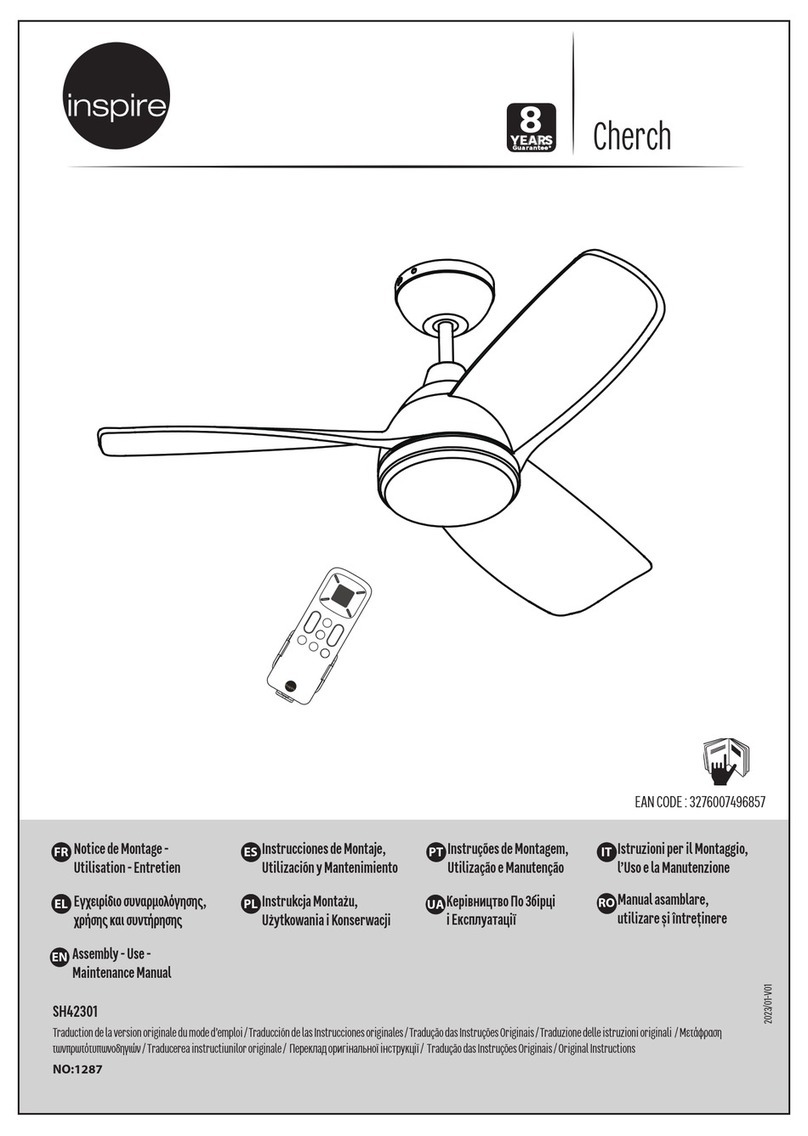
Inspire
Inspire Cherch SH42301 Assembly, Use, Maintenance Manual
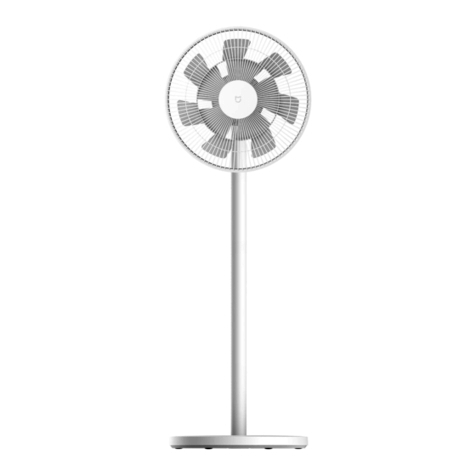
Xiaomi
Xiaomi Mi Smart Standing Fan 2 Pro user manual
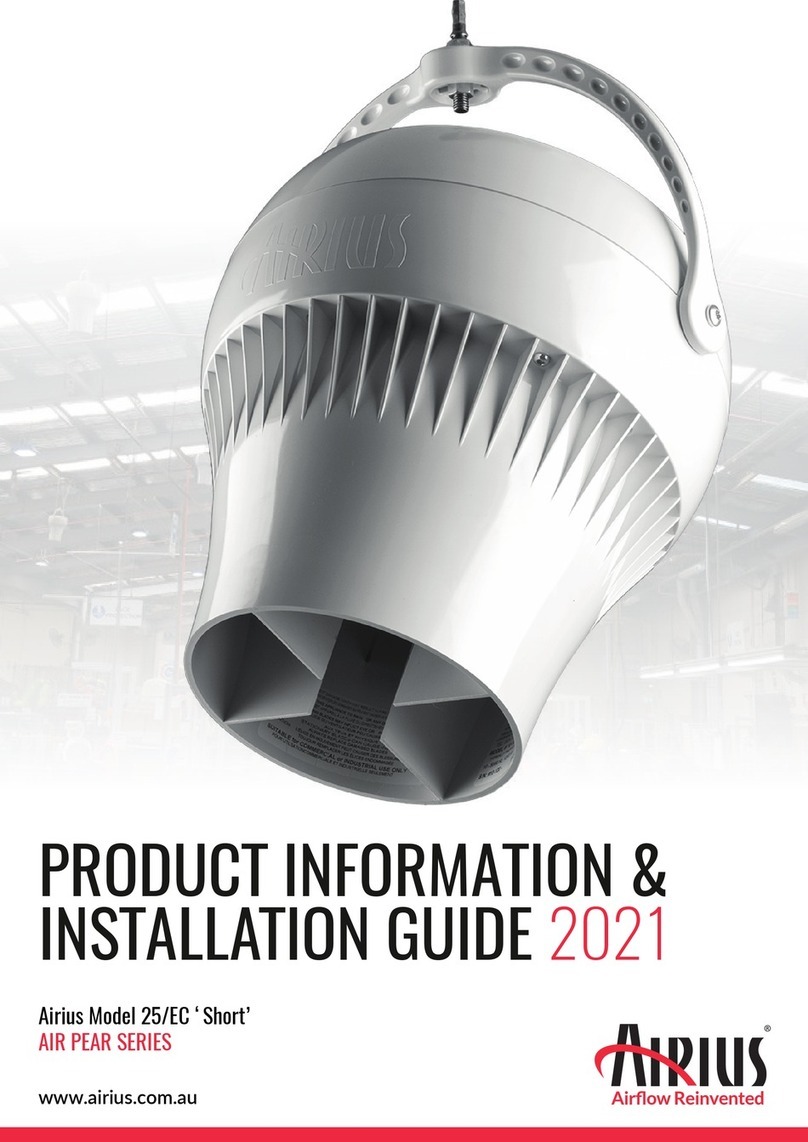
Airius
Airius 25/EC Short installation guide
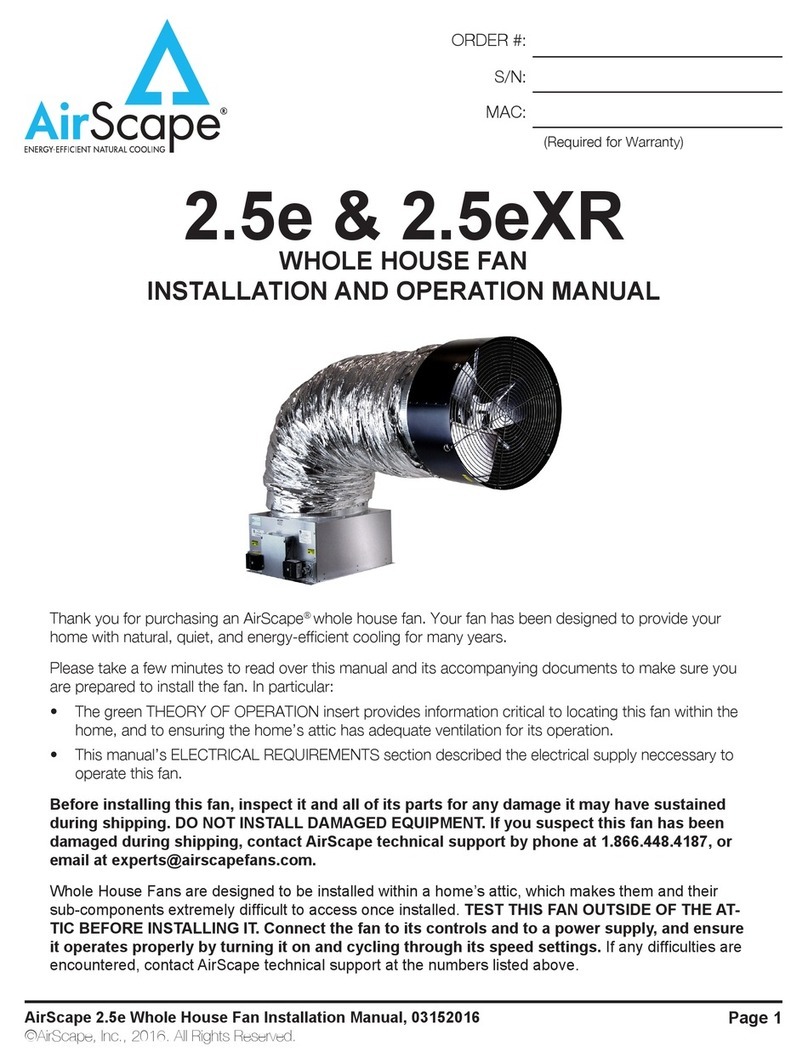
AirScape
AirScape 2.5E User's installation and operation manual
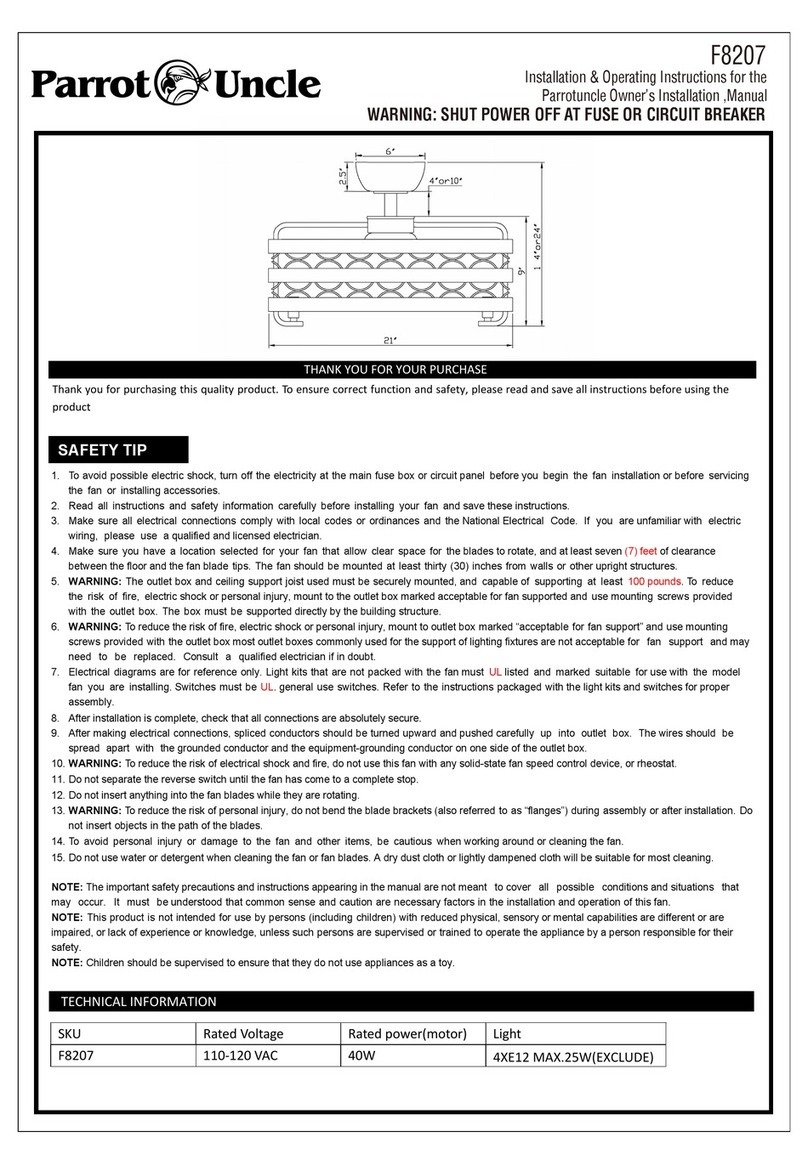
Parrot Uncle
Parrot Uncle F8207 Installation & operating instructions
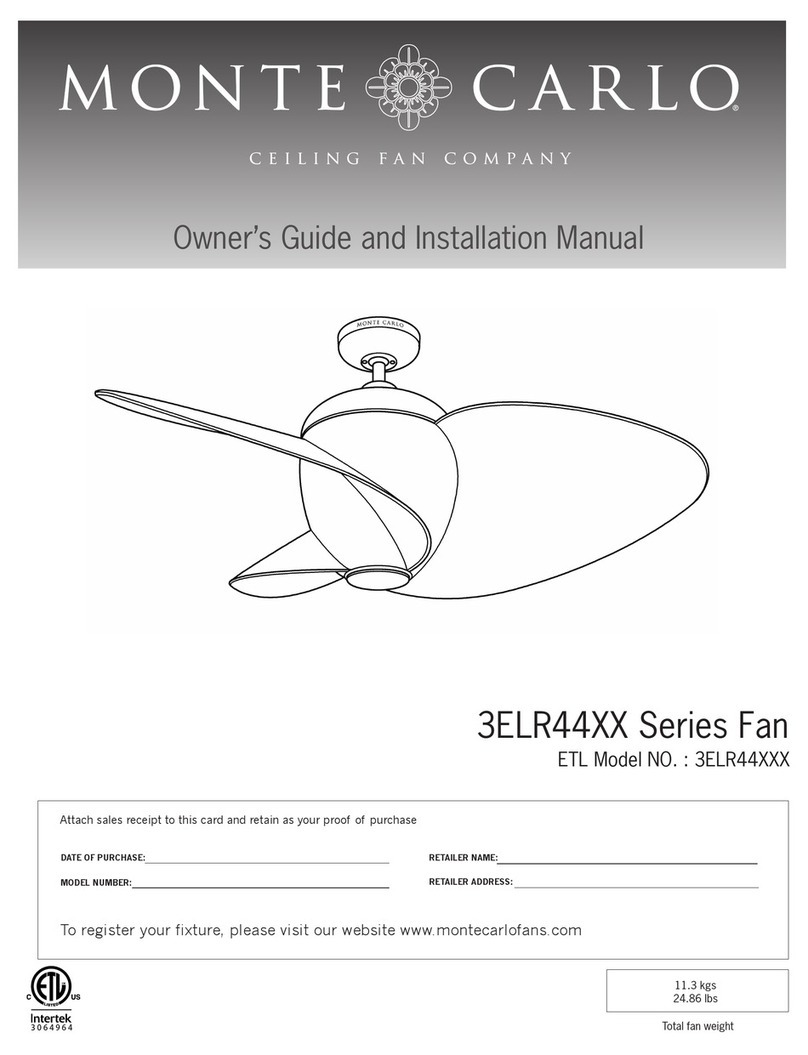
Monte Carlo Fan Company
Monte Carlo Fan Company 3ELR44 Series Owner's guide and installation manual


